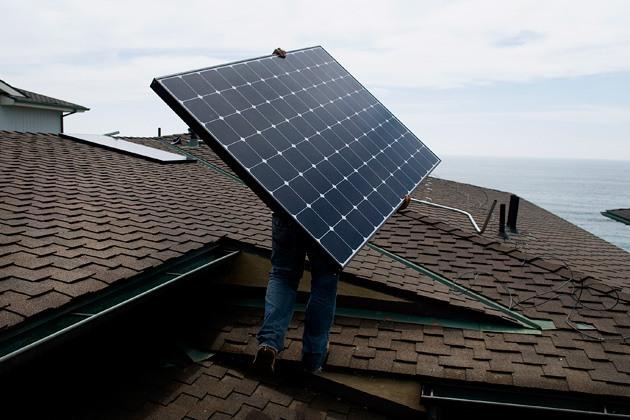Although a handful of North American homes have rooftop solar panels installed, they still suffered the blackout alongside the other 6 million power customers in the region.
This is because most residential solar panels are connected to the grid so that households can feed excess power back for sale. According to the Solar Energy Industries Association, when the grid goes down, so do they. “They don’t stay on even when the sun shines but the power grid is out,” says Danny Kennedy, co-founder of Oakland (Calif.)-based Sungevity. Having a few hundred customers hit by Sandy, it was important that they all knew about the cut-out feature which is designed as a safety precaution to prevent electrocutions on line workers as they repair damaged power lines.
Despite the cyclonic winds, home solar arrays appeared to withstand the Sandy’s furious force. Sungevity says the companies solar installations are specially designed to withstand winds of up to 160 kilometres per hour. Sandy’s gust hit close to 140 kph at their peak.
San Francisco solar company Sunrun have installed over 6,500 solar panel systems in the North east states and despite Sandy’s fury, they also hadn’t recieved any reports of damage by Wednesday afternoon, according to spokeswoman Susan Wise. As a precaution, Sunrun emailed customers to advise them not to go near their solar panels during or after the storm, but to call the company for maintenance or repairs. Last year, during Hurricane Irene, one of Sunrun’s customers sent in a video of his new solar panels weathering the storm in his New Jersey home.
John Steeves, a Sungevity customer in Woodstown, N.J., with 39 panels on his roof, says the storm flooded his basement, knocked out power, and toppled massive trees in his neighbourhood but left his solar arrays unscathed. He thinks having the panels above even helped protect the roof of his 47-year-old home. His part of South Jersey had winds of 50 mph and gusts of 75, he says. “The panels probably took a lot of that impact for my roof itself,” says Steeves. Now his lights are back on, and his roof is feeding power to the grid once again.
Similar stories came out after cyclone Yasi tore through Far North Queensland in February 2011.



